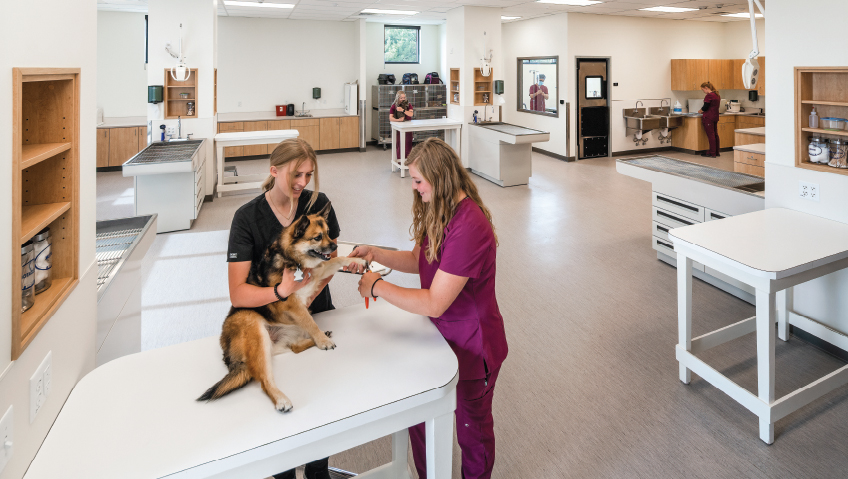A-LINX Building Technologies, headquartered in Ontario, offers comprehensive contracting services specializing in the prefabrication of roof trusses and both exterior and interior load-bearing wall systems. Through its innovative approach, A-LINX enables clients to achieve faster and more cost-effective completion of superstructures compared to traditional construction methods.
In response to the evolving needs of the construction sector, A-LINX has emerged as a proactive player, leveraging cutting-edge advancements in prefabricated light-gauge steel construction. This innovative approach revolutionizes every stage of the building process, effectively mitigating risks, reducing costs, shortening timelines, and optimizing material usage.
A-LINX’s offerings encompass customizable components, available in both standard and made-to-order configurations. Moreover, the availability of pre-finished panels in diverse building material finishes affords clients unparalleled flexibility in design, catering precisely to their unique requirements and preferences.
Despite its relative novelty, A-LINX derives substantial strength and expertise from seasoned professionals with extensive backgrounds in various construction-related disciplines. This wealth of experience has been instrumental in driving the company’s consistent annual growth trajectory.
“Our company is roughly six years old and, following a positive leap in year two, has seen a consistent revenue growth of roughly 10 to 15 percent year over year,” says General Manager, Matthew Pellitteri.
Navigating growth poses challenges amidst evolving dynamics in construction techniques and a demographic shift within the industry. “It’s a fairly stagnant industry in terms of innovation and growth compared to others,” says Pellitteri. “If looked at in a vacuum, there’s been innovation and growth within the industry in several ways. But in comparison to industries like automotive or even agriculture, it’s relatively slow moving.”
The changing demographics underscore a stark reality: for every 10 individuals retiring from the industry, only two return. This imbalance in resources necessitates the exploration of innovative approaches to project execution.
Furthermore, many projects present unique challenges, ranging from spatial constraints to speed, traffic requirements, logistical considerations, and evolving architectural designs. These factors contribute to a constantly changing construction environment where each project presents its own set of complexities and requirements.
“You have to be creative in the way that you do it, and that’s why we started this business,” Pellitteri says. “It was more or less through work we had for our own developments, and we found this type of building typology with steel prefabrication was a great solution to expedite schedules, control costs, and develop the designs to a place where many of the questions have been answered and not discovered on a job site.”
Despite initially focusing on the company’s own developments and properties, A-LINX recognized a growing market demand for its technology. Consequently, the company ventured into the broader market, successfully catering to a diverse clientele. A-LINX’s solutions have been instrumental in the construction of various structures, including condos, retirement residences, apartments, long-term care facilities, and industrial spaces.
“The reason we do this job and construction technique is to provide a quality product that’s factory-controlled, that will expedite construction schedules and will relieve the need for such heavy labour on a job site,” Pellitteri explains.
Addressing the labor shortage, particularly in skilled trades, has posed significant challenges. To tackle this issue, A-LINX collaborates closely with local colleges, actively engaging with their engineering, construction, and welding programs. Additionally, the company maintains a presence on various boards and committees dedicated to studying the evolving dynamics within the construction industry.
“A lot of work being done now is being migrated into a facility, and what’s happening in colleges—more than universities, where you would generally see civil engineers and industrial engineers—is that these college graduates have direct core competencies in up-to-date technologies like Revit,” says Pellitteri.
The office resources at A-LINX predominantly consist of college graduates who possess a strong understanding of contemporary programs and construction techniques. This knowledge base allows the company to effectively leverage and implement up-to-date methodologies in its manufacturing processes.
“That’s really what we do,” Pellitteri says. “We take a building and set it into pieces so we can understand how to effectively build it in a plant setting where we control all of the safety facets of a workstation or setup, the type of materials we’re using, and how we procure those materials.”
Steel stands as the primary commodity utilized by A-LINX, capitalizing on its versatility to roll and shape it directly to size with remarkable precision and minimal waste, often less than one percent. Through strategic collaboration with suppliers, the company ensures the procurement of materials tailored to the unique requirements of each project, effectively managing costs. Additionally, meticulous monitoring of daily output enables A-LINX to control both internal and project labor costs, further optimizing efficiency and resource utilization.
Pellitteri emphasizes that A-LINX’s approach prioritizes early resolution of constructability and other critical issues at the onset of a project. Unlike conventional practices where details like window or door opening sizes and mechanical penetrations are often addressed later on-site, A-LINX addresses these aspects during the initial stages of design. This proactive approach is essential as the company constructs the building’s structure within its facility before installation on-site. As such, consultants, owners, and general contractors must collaborate closely to resolve these issues early, enabling A-LINX to fully capitalize on the benefits of prefabricated construction.
A-LINX, born under the umbrella of its parent company, Amico Affiliates’ design-build division, has established a stellar reputation for constructing load-bearing and non-load-bearing wall panels using cold-form steel. These panels play a pivotal role in supporting the overall structure of a diverse range of buildings, spanning from multi-level townhomes to towering 12-storey hotels and condominiums.
“We build these panels that support the structure inside our facility, and we clad it as an option for a client with a number of different finishes on the exterior,” says Pellitteri. This can be metal siding, stucco, or faux brick. The team installs windows and patio doors before delivery to the job site.
Once on-site, the panels are installed to support the floor system, typically consisting of concrete precast, open web steel joists, or cold-form steel. This integration occurs seamlessly as the building progresses, ensuring structural integrity and stability throughout the construction process.
“For us, it’s very important to work with structural engineers, architects, and MEP companies to design these walls in a factory setting so when they’re ready to go on site, they’re completely coordinated. Generally, if done correctly, there are 15 to 20 percent schedule-savings on the job site.”
In addition to cost savings, A-LINX prioritizes sustainability by efficiently managing material waste. Moreover, from an environmental standpoint, the longevity of steel buildings offers significant advantages compared to wood, a common competitor for structures up to a certain number of storeys. Steel’s durability ensures prolonged structural integrity, reducing the need for frequent replacements and minimizing environmental impact over the building’s lifecycle.
A-LINX adopts an alternative building models mindset, offering diverse variations of townhome designs that fill the niche often referred to as the “missing middle.” While other companies primarily focus on constructing single-family homes and condominiums, A-LINX recognizes a growing demographic seeking options between these two extremes.
Matthew Pellitteri observes a significant rise in individuals who fall within this middle ground. They are not inclined toward purchasing a condominium, yet lack the financial resources to invest in a standalone home. Additionally, their lifestyle preferences or work location may not align with traditional housing options. A-LINX addresses this demand by providing townhome designs tailored to meet the unique needs of this demographic.
“There’s a huge shortage of housing in Canada—in Ontario, specifically—so finding a proper structure or home for somebody to live in is very important. Household accommodations are very important, and so alternative building models, from stacked townhomes to condominiums and apartments to ADUs—accessory dwelling units—these are the choices we work within.”
The company has a great handle on attainable housing, Pellitteri notes. “There’s a need for attainable housing, obviously, and that can be a 12-storey building or a complex luxury condominium in a major metropolitan area. That’s the span of projects we’ve put together with complexity and design.”
Pellitteri emphasizes the opportunities that exist if governments can expedite the permitting process through establishing standardized guidelines. These measures are crucial to facilitate the adoption of prefabricated solutions, enabling swift and efficient execution of construction projects. By streamlining regulatory procedures and ensuring consistency in guidelines, the government can create an enabling environment for the widespread adoption of prefabricated construction methods, ultimately addressing the pressing housing shortage more effectively.
“Realistically, we have to get people into homes, and we want to provide them a home that meets a range of desires,” he says. “There are opportunities to build as such, but if certain guidelines can be provided, then that will translate into a number of buildings, units, and homes where you can have economies of scale—where you can design, procure, and save on construction costs.”
Housing prices are prohibitive across the country, and according to CMHC’s Ontario Housing Market Report, the province’s average home sale price is $423,128 CAD.
“Providing attainable living for a range of different individuals and families is important. And that’s really where a lot of that missing middle is,” Pellitteri says. “For us, attainable housing is huge, and it’s needed.”
As a result of its commitment to addressing diverse housing needs, A-LINX actively develops solutions for the segment seeking more affordable housing options. However, the team also continues to undertake projects in the luxury condominium sector, retirement residences, and long-term care facilities. A-LINX prides itself on effectively delivering quality outcomes across all these sectors, showcasing its versatility and expertise in catering to a wide range of housing requirements.
“What sets us apart from other companies is our vertical integration. Along with our parent company Amico Affiliates, we can self-perform complete projects, whereas other panelizers are only a small part of an overall project.”
Through that vertical integration, from design to civil work, building structure to finishings, Amico can check all those boxes, says Pellitteri. “That’s what truly sets us apart from others—that we add peace of mind and convenience to any general contractor or developer that’s interested in working with us.”






